EPA Report Card: How well are they doing with the RRP Rule?

Many news outlets and politicians have been using report card scores to express how well they think people, government policies and regulations are performing. Several politicians, government employees and even our president have provided their own self assessment scores as well. It is almost two years now since the EPA RRP Rule went into effect. I thought I would offer my own report card on how I think the EPA has performed so far in four areas regarding the RRP Rule. EPA is welcome to offer their own self assessment score.
Subject: Outreach about the rule
EPA has claimed to have done extensive outreach to consumers and the regulated community. They list a variety of methods used and places where ads and announcements were placed.
Report Card Score: D-
 In reality what they have done has not been effective. Either the message is not effective, the placement is not effective or both. According to a survey done by Professional Remodeler magazine 65% of remodelers surveyed estimated that less than 10% of their potential clients are aware of the rule. Only 5 percent think more than half of homeowners know about it.
In reality what they have done has not been effective. Either the message is not effective, the placement is not effective or both. According to a survey done by Professional Remodeler magazine 65% of remodelers surveyed estimated that less than 10% of their potential clients are aware of the rule. Only 5 percent think more than half of homeowners know about it.
On a recent webinar with EPA Officials Regarding RRP Public Awareness and Enforcement Efforts hosted by NCHH, I asked EPA officials if they were doing any tracking to check the actual effectiveness of their outreach efforts. They are not. Essentially the answer was that EPA is not a professional marketing organization and has no way of tracking results. But they said they will be doing more outreach…
Subject: Getting Firms Certified
EPA requires all firms doing renovation, repair and painting work on homes built prior to 1978 become EPA Certified Firms before performing or offering to perform such work.
Report Card Score: F

Before the rule rule came into effect EPA stated; "There are approximately 211,000 firms estimated to become certified to engage in renovation, repair, or painting activities." As of posting this blog EPA’s web site claims that EPA has certified 97,746 firms (118,885 firms including those approved by authorized states). According to a report by the Joint Center for Housing Studies at Harvard University, the most recent government census showed more than 650,000 businesses received a majority of their revenue by providing remodeling services in 2007 and that number does not include the large number of part-time, semi-retired, and “moonlighting” contractors reporting gross revenues of less than $25,000. I think we also know there are many illegally operating contractors as well that did not make it into the census count.
Admittedly not all remodeling companies work on pre-1978 homes. However, there are many other business types other than remodelers who disturb lead paint. One example is exterminators. According to Exterminator.com there are over 20,000 extermination companies in the US. Others who would need to become certified include landlords, property management firms, banks that own foreclosed properties, housing authorities, cities/towns and municipalities. (According to Google answers there are 18,443 cities, towns, villages, and other such governing groups in the United States, not including any island areas other than Puerto Rico) I am sure you could list other business and entity types that would fall under the rule. My best guess is that EPA has only certified about 10% of the firms that should be certified and has completely misjudge the number of firms affected by this rule.
As a side note, I contacted EPA to find out how many workers have become Certified Renovators so far. I was told they are still trying to decide how to count them…
Subject: Enforcement
There are 12 states that have taken over the rule so far. That leaves 38 states plus American Samoa, District of Columbia, Guam, US Virgin Islands and Puerto Rico under administration and enforcement by EPA.
Report Card Score: F
 So far EPA has only published one violation since the rule came into effect in April of 2010. On the other hand the state of Massachusetts took over the rule in July of 2012 and has published over 20 violation enforcements to date.
So far EPA has only published one violation since the rule came into effect in April of 2010. On the other hand the state of Massachusetts took over the rule in July of 2012 and has published over 20 violation enforcements to date.
Though not confirmable facts, one commenter on a LinkedIn discussion claimed “there are only 37 Certified Firms in Maui County when there are 1,500+ Licensed Contractors and double to triple unlicensed contractors”.
Industry insiders report EPA has been doing RRP investigations. EPA claims we will hear more about violations and enforcement very soon.
Subject: Protecting children and others from lead poisoning due to renovations
“The purpose of the Renovation, Repair, and Painting (RRP) Rule is to minimize exposure from lead-based paint dust during renovation, repair, or painting activities. This is a key effort in reducing the prevalence of childhood lead poisoning, particularly lead poisoning caused by housing contaminated by renovation activities. This will also minimize exposure to older children and adults who are also adversely impacted by lead-based paint dust exposure.” (From EPA Web site)
Report Card Score: Incomplete
 It is a fact that lead is poisonous and RRP activities can cause poisoning. However, EPA does not know how many children were actually poisoned by RRP activities before the rule came into effect. If you check any of the data it refers to RRP activities as the “likely source” of lead poisoning, not “the cause”. That being the case, EPA has no way to know if the RRP rule is making a difference or not. It is ‘likely” that it is helping. But, without knowing where EPA started and where we are now that the rule has been in place for almost a year, EPA has no idea if what they have been doing is effective enough and or if or where it can improve effectiveness within the rule.
It is a fact that lead is poisonous and RRP activities can cause poisoning. However, EPA does not know how many children were actually poisoned by RRP activities before the rule came into effect. If you check any of the data it refers to RRP activities as the “likely source” of lead poisoning, not “the cause”. That being the case, EPA has no way to know if the RRP rule is making a difference or not. It is ‘likely” that it is helping. But, without knowing where EPA started and where we are now that the rule has been in place for almost a year, EPA has no idea if what they have been doing is effective enough and or if or where it can improve effectiveness within the rule.
Unfortunately, the rule may also be causing more children to be poisoned than before the rule came into effect, because of EPA's inability to adequately enforce it. As reported in this press release, to keep costs down, consumers are hiring non-certified firms to work on their homes and the required lead safe-practices are not being used. Also, contractors are reporting that some realtors and insurance adjusters are falsely telling consumers that the rule does not apply at their homes based on location and or for the work they are having done. All of this has fostered an underground economy of contractors taking advantage of purposely ignoring the rule to keep prices down and improve their ability to sell jobs.
How do you think EPA has been doing with the RRP Rule so far? Consider using the comment area below to offer your own subjects and report card scores.

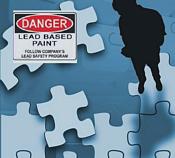 Looking for accurate information about the EPA RRP rule?
Looking for accurate information about the EPA RRP rule? 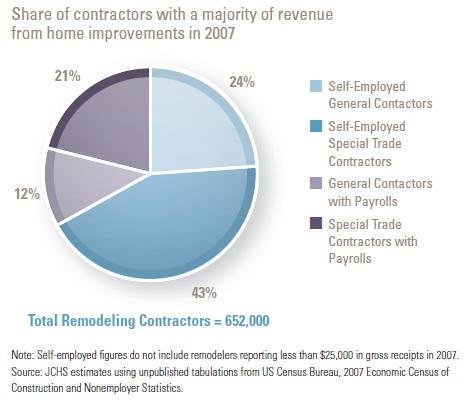



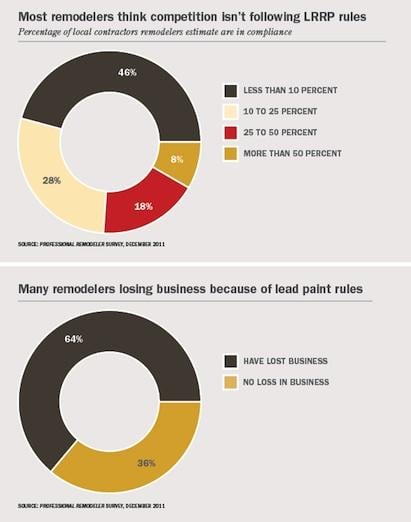
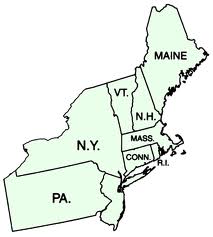

 Of the 1,500+ remodeling contractor respondents, only 25% reported doing any lead clearance testing at all. Regardless of cost variations, the majority of respondents reported that significant cost is added to a home improvement project with the addition of lead clearance testing.
Of the 1,500+ remodeling contractor respondents, only 25% reported doing any lead clearance testing at all. Regardless of cost variations, the majority of respondents reported that significant cost is added to a home improvement project with the addition of lead clearance testing. Why we did the surveys: We believe what all of you are saying out there, and we've been hearing your comments in blogs, social media, by talking to you directly. However, when trying to bring an issue to light in Washington, officials want current data to review, and providing anecdotal data as heard from third parties is typically seen as not credible, hence the surveys. NARI is sharing results of the research on Capitol Hill that EPA's implementation of the Renovation, Repair, and Painting rules may increase the likelihood of lead poisoning to children, as opposed to lowering the risk. Adding to this risk is the expected forthcoming of the Lead Clearance Rule, which will only exacerbate the problem. Additionally, NARI is reaching out to small business interest groups in Washington and media nationwide to make them aware of the survey results and how the rule is impacting your business.
Why we did the surveys: We believe what all of you are saying out there, and we've been hearing your comments in blogs, social media, by talking to you directly. However, when trying to bring an issue to light in Washington, officials want current data to review, and providing anecdotal data as heard from third parties is typically seen as not credible, hence the surveys. NARI is sharing results of the research on Capitol Hill that EPA's implementation of the Renovation, Repair, and Painting rules may increase the likelihood of lead poisoning to children, as opposed to lowering the risk. Adding to this risk is the expected forthcoming of the Lead Clearance Rule, which will only exacerbate the problem. Additionally, NARI is reaching out to small business interest groups in Washington and media nationwide to make them aware of the survey results and how the rule is impacting your business. At a RRP workshop I attended last week, sponsored by the Lead and Environmental Hazards Association (LEHA), several renovators complained to Mike Wilson of EPA about EPA’s handling so far of the RRP rule. One after the other renovators cited examples of projects they had lost to other businesses that are ignoring the rule. Several even reported home owners had laughed at them when they tried discussing the rule and its requirements. One attendee reported that a homeowner actually told him that he would find another contractor who would ignore the rule as a way of saving money. It all seemed to be new news to Mike Wilson who told us he oversees RRP Policy, so could not comment specifically about enforcement. When asked what message he would bring back to the EPA in Washington after the meeting, Mike said he would let them know that regulated contractors wanted a level playing field. Attendees let Mike know that they have been already giving that same message to EPA, perhaps if Mike delivers the message the leadership at EPA will listen and take action.
At a RRP workshop I attended last week, sponsored by the Lead and Environmental Hazards Association (LEHA), several renovators complained to Mike Wilson of EPA about EPA’s handling so far of the RRP rule. One after the other renovators cited examples of projects they had lost to other businesses that are ignoring the rule. Several even reported home owners had laughed at them when they tried discussing the rule and its requirements. One attendee reported that a homeowner actually told him that he would find another contractor who would ignore the rule as a way of saving money. It all seemed to be new news to Mike Wilson who told us he oversees RRP Policy, so could not comment specifically about enforcement. When asked what message he would bring back to the EPA in Washington after the meeting, Mike said he would let them know that regulated contractors wanted a level playing field. Attendees let Mike know that they have been already giving that same message to EPA, perhaps if Mike delivers the message the leadership at EPA will listen and take action.
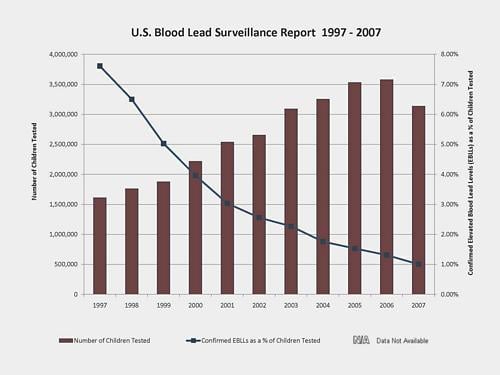

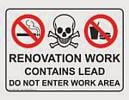 When you remove all the smoke and mirrors from this rule, the EPA can prove two thoughts; 1 Some remodeling activities create dust 2 Lead paint dust can create or raise EBLL’s Independent of each other those two statements can be proven, but the combination (which is a major foundational reason for RRP) is not so clear. Why?
When you remove all the smoke and mirrors from this rule, the EPA can prove two thoughts; 1 Some remodeling activities create dust 2 Lead paint dust can create or raise EBLL’s Independent of each other those two statements can be proven, but the combination (which is a major foundational reason for RRP) is not so clear. Why? Since I can’t explain to the customer the need for this rule, I encourage my customers and prospects to contact their state and federal representatives and ask them to provide facts and figures to explain the need for the RRP rule. To assist them with this, I supply them with a letter to send to their representatives along with a stamped and addressed envelope. I encourage all other contractors to consider doing the same.
Since I can’t explain to the customer the need for this rule, I encourage my customers and prospects to contact their state and federal representatives and ask them to provide facts and figures to explain the need for the RRP rule. To assist them with this, I supply them with a letter to send to their representatives along with a stamped and addressed envelope. I encourage all other contractors to consider doing the same.  In a document dated December 1998 EPA received a
In a document dated December 1998 EPA received a  Two recent efforts by trade associations recently came across my attention. One was by the National Association of the Remodeling Industry (NARI). In a
Two recent efforts by trade associations recently came across my attention. One was by the National Association of the Remodeling Industry (NARI). In a  I suggest that the two letters contain some very good points and are well written. Renovators with similar concerns could, using the content of these two letters as a reference, write to their own local politicians and or to EPA to express their concerns and demand that EPA recognize the challenges small businesses are having as a result of the rule as well as EPA’s lack of adequate administration and enforcement of the rule.
I suggest that the two letters contain some very good points and are well written. Renovators with similar concerns could, using the content of these two letters as a reference, write to their own local politicians and or to EPA to express their concerns and demand that EPA recognize the challenges small businesses are having as a result of the rule as well as EPA’s lack of adequate administration and enforcement of the rule.
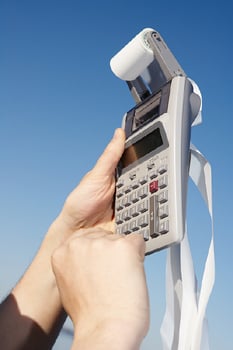 “Number of events and individuals affected: In the first year that all of the rule requirements will be in effect, there will be an estimated 8.4 million renovation, repair, and painting events where lead-safe work practices will be used due to the rule. As a result, there will be approximately 1.4 million children under the age of 6 who will be affected by having their exposure to lead dust minimized due to the rule. There will also be about 5.4 million adults who will be affected. After improved test kits for determining whether a painted surface contains lead-based paint become available (which is assumed in the analysis to occur by the second year of the rule), the number of renovation, repair, and painting events using lead-safe work practices is expected to drop to 4.4 million events per year. No change in the number of exposures avoided due to the rule is expected because the improved test kit will more accurately identify paint without lead, thus reducing the number of events unnecessarily using the required work practices.”
“Number of events and individuals affected: In the first year that all of the rule requirements will be in effect, there will be an estimated 8.4 million renovation, repair, and painting events where lead-safe work practices will be used due to the rule. As a result, there will be approximately 1.4 million children under the age of 6 who will be affected by having their exposure to lead dust minimized due to the rule. There will also be about 5.4 million adults who will be affected. After improved test kits for determining whether a painted surface contains lead-based paint become available (which is assumed in the analysis to occur by the second year of the rule), the number of renovation, repair, and painting events using lead-safe work practices is expected to drop to 4.4 million events per year. No change in the number of exposures avoided due to the rule is expected because the improved test kit will more accurately identify paint without lead, thus reducing the number of events unnecessarily using the required work practices.” How bad is the child lead poisoning problem? And, how many of the poisoned children were poisoned by lead due to renovation work? The answer to these two simple questions might surprise you. Had the EPA and Congress done adequate research, might they have found better and more cost effective ways to further reduce the number of lead poisoned children?
How bad is the child lead poisoning problem? And, how many of the poisoned children were poisoned by lead due to renovation work? The answer to these two simple questions might surprise you. Had the EPA and Congress done adequate research, might they have found better and more cost effective ways to further reduce the number of lead poisoned children?  No child should be poisoned by lead. However, our government and politicians are concentrating in the wrong area if they really want to substantially address the lead poisoning problem. As I had discussed in a
No child should be poisoned by lead. However, our government and politicians are concentrating in the wrong area if they really want to substantially address the lead poisoning problem. As I had discussed in a 


